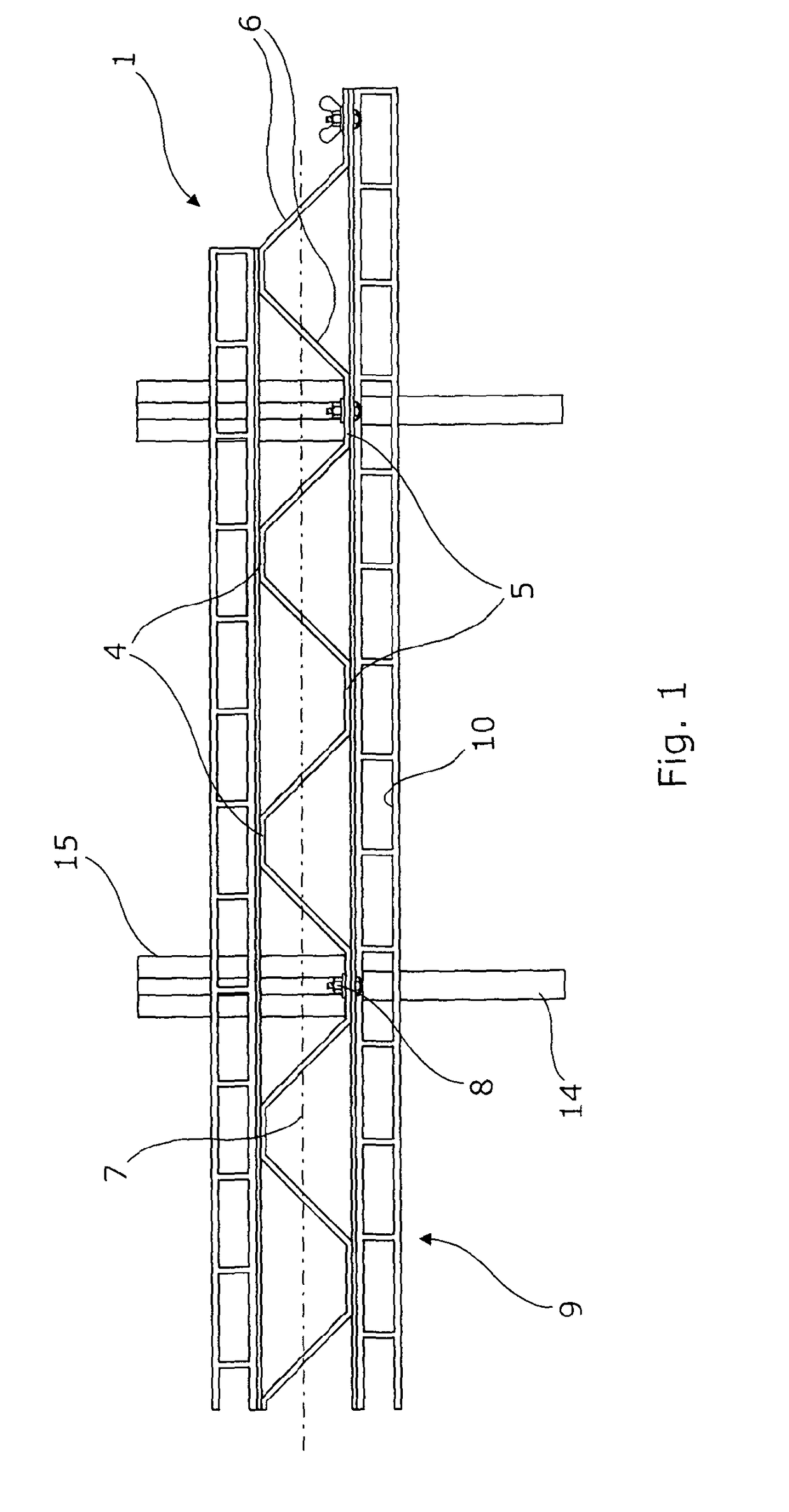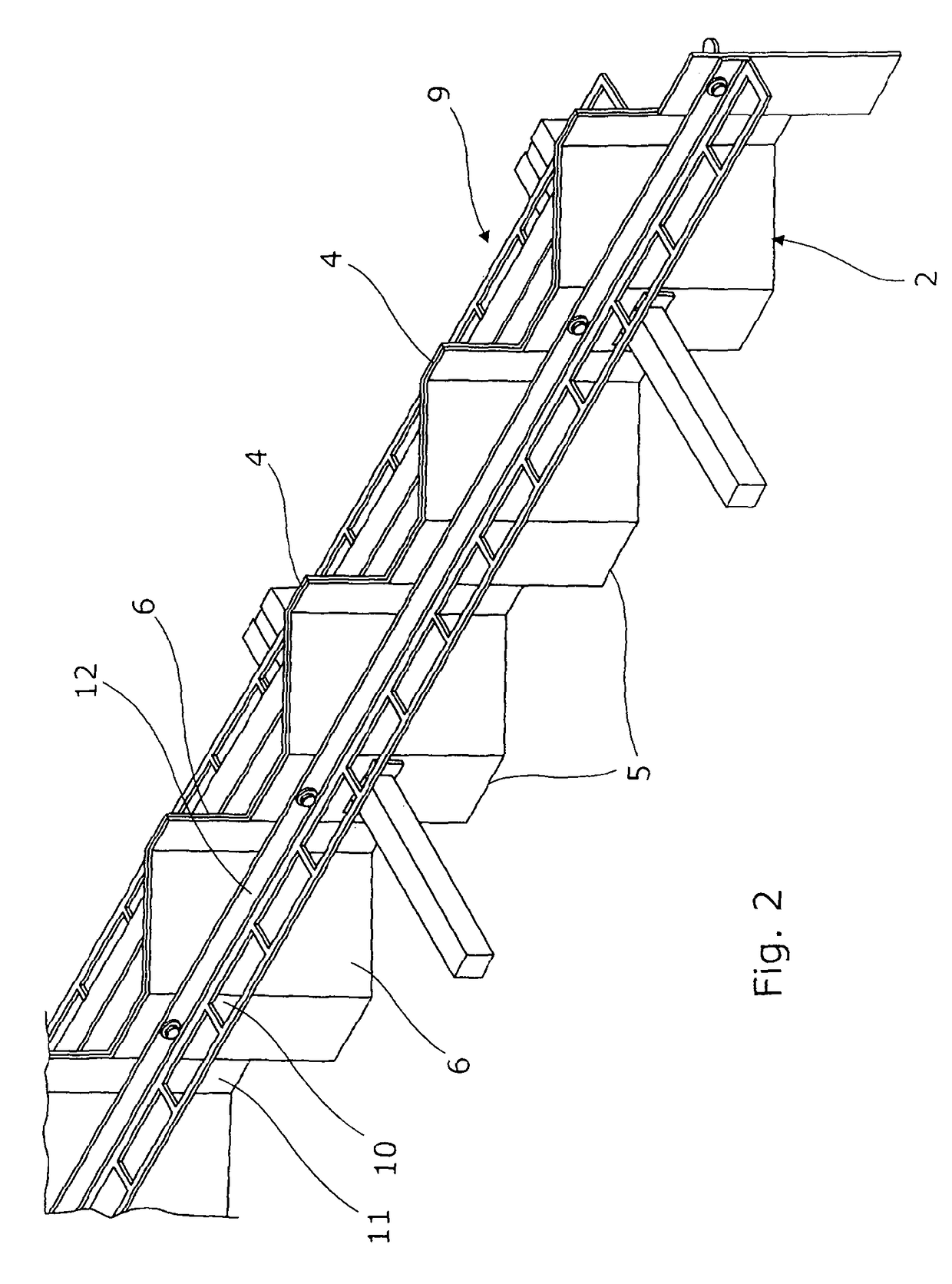Movement joint
a technology of moving joints and joints, applied in the direction of bridges, roads, constructions, etc., can solve the problems of insufficient level of the sub-base on which the concrete is laid, cost and complexity in fabrication, and eventual deterioration of the joints, so as to improve the free movement
- Summary
- Abstract
- Description
- Claims
- Application Information
AI Technical Summary
Benefits of technology
Problems solved by technology
Method used
Image
Examples
Embodiment Construction
[0048]Referring to the drawings, a free movement, arris protection, construction joint 1 has a pair of arris protection members 2,3 formed complementarily from strips of sheet with a continuous trapezium wave form. A divider one 2 of the members is typically 100 mm deep for a nominal 0.1 m deep slab. The other one 3 is typically 50 mm deep. The members are of 2 mm steel plate, either mild (possibly galvanised) or stainless.
[0049]The wave form is comprised of flanges 4,5, typically extending 150 mm in the length of the joint and of webs 6, extending at 45° to the flanges and the length of the joint. The flanges 4,5 are spaced 150 mm on opposite sides of a mid-plane 7 of the joint. The members 2,3 are bolted together with flangible nylon bolts 8, with their top (in use) edges flush.
[0050]Welded to the outer ones of the flanges are L strips 9 having apertures 10 in their flats 11 extending from the flanges for anchoring the joint to its slabs. The bolts pass through welded on ones 12 o...
PUM
 Login to View More
Login to View More Abstract
Description
Claims
Application Information
 Login to View More
Login to View More - R&D
- Intellectual Property
- Life Sciences
- Materials
- Tech Scout
- Unparalleled Data Quality
- Higher Quality Content
- 60% Fewer Hallucinations
Browse by: Latest US Patents, China's latest patents, Technical Efficacy Thesaurus, Application Domain, Technology Topic, Popular Technical Reports.
© 2025 PatSnap. All rights reserved.Legal|Privacy policy|Modern Slavery Act Transparency Statement|Sitemap|About US| Contact US: help@patsnap.com



